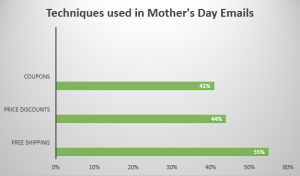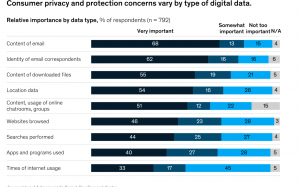Digital transformation is the process of using digital technologies to create new—or modify existing—business processes, culture, and customer experiences to meet changing requirements and to capture new market opportunities. Reimagining your brand through the lens of digitization reveals not only improved ways to tell your brand story but also new strategies to scale and deliver remarkable customer experiences.
Decades after the introduction of the internet, new technologies are still disrupting nearly every industry, so transformation is not optional for you, whatever your industry. However, transformation is now occurring at the speed of light all around you.
So how do you speed up your digital transformation initiatives and avoid getting left behind? To continue to win in the markets where you compete, you need to quickly identify relevant technologies that can give you an edge and transform your processes without compromising productivity and profitability.
Here are four practical tips to accelerate your digital transformation efforts.
1. Outsource Technology Tasks
If you want to avoid pitfalls on your digital transformation journey, outsource complex tasks to a trusted partner who knows the way. As much as you’d like to engage your current team to drive complex technology-enabled change, they might not be sufficiently trained with the new technologies to move quickly. Accelerate change and maximize efficiency by tapping external experts. For example, hiring managed IT services for your digital transformation initiative takes the heat off your internal IT resources who may already be overloaded supporting your current business.
By partnering with a skilled and knowledgeable third party, your employees can stay focused and knowledge can be transferred through the process. In this way, your team will learn from the experts, thereby equipping them with the capabilities they need to tackle future transformational projects.
2. Adjust Your Culture
One of the basic foundations to have a smooth transition towards digital transformation is to transform the company culture as well. The culture of an organization is directly related to its ability to adapt to change. Your team will likely accept the new technologies more if you create a culture that encourages employees to be lifelong and continuous learners. When everyone’s open to changes and is flexible in adapting to them, the transition will be more likely to succeed.
Therefore, it’s wrong to rush the process of digital transformation as cultures don’t change overnight. Avoid mayhem in your digital transformation; you’ll need to take time to reassure everyone that changing and innovating would be excellent and crucial for the business.
When your staff understands the essence of technologies and systems, they’ll gradually accept and adapt to them. Incorporate the change from top-down management, and it’ll generate positive outcomes.
3. Make Small but Smart Investments
Businesses often try to accomplish too much and are left with a long development period. This concept may apply to your digital transformation. Too much multitasking is a disaster waiting to happen. Hence, it’s best to start with small investments while making sure they’re effective and productive.
If you want to achieve success in more significant endeavors, try a smaller project in the beginning. Apply digital efforts on it at first, and see how it’ll turn out. Choosing small but smart investments will have a ripple effect, and eventually, the time will come when your business will be ready to tackle more significant projects. To win over your colleagues and everyone in the company, congratulate and commend everyone’s efforts when a small digital transformation project succeeds.
4. Build a Digital Transformation Playbook
You can focus your efforts and resources on areas of relatively low complexity at the beginning of your digital changes. You’ll experience lower risks when you preemptively tackle more minor projects. Furthermore, your team will also observe and study how the transformation should take part. In turn, they can learn from it and apply these learnings in the next step of digital transformation.
Another perk for the lesser-complex transformation projects is that fewer people will be involved in the change. This will allow all the other teams to operate on their own for the time being. As a result, momentum can be built for more complicated efforts in the future. Having a structured playbook is a great way to prioritize areas of focus, mitigate the risk of overwhelming the organization and shorten the time to a profitable outcome.
The Takeaway
Based on your customer base and business objectives, you’ll be able to determine your path to digital transformation. Ensure you have clear goals in mind to help your company accomplish its digital transformation objectives and monitor your progress using key metrics. Hopefully, with the tips shared in this article, you’ll be able to speed up your digital transformation journey.
Digital & Social Articles on Business 2 Community
(28)






